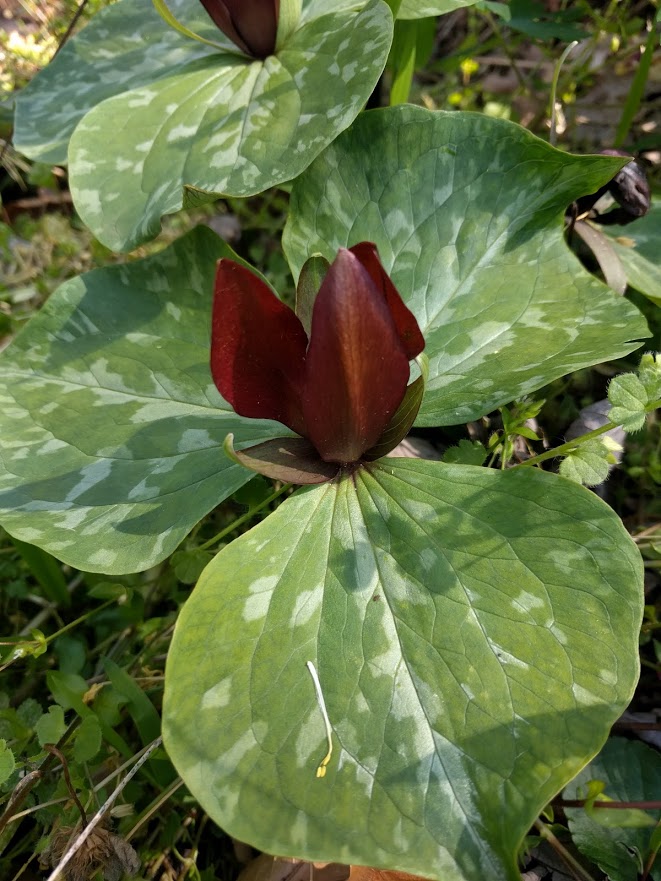
UT Gardens’ March 2021 Plant of the Month
Submitted by Alexandria Davidson, horticulturist and plant collections curator with the UT Gardens, Knoxville
Trillium, sometimes known by common names including wake robin or trinity flower, is a genus comprised of 49 species, with 39 of them being native to North America. In their native habitat trillium grow best in partly shaded, deciduous woodland areas. In early spring these ephemeral beauties begin to emerge and cover forest floors where they have colonized. One of their common names, trinity flower, can help with identification as it refers to the arrangement of the plant’s parts – leaves and flower petals – that occur in multiples of three.
Trillium are typically divided into two groups: pedicellate, where the flower is raised on a pedicel slightly above the foliage; and sessile, in which there is no pedicel and the flower sits directly above the foliage. Depending on the species, trillium begin to bloom in early to late spring with a wide range of flower colors including white, yellow and various shades of red.
While they can be easily found in woodland areas in spring and early summer months, they are threatened in their natural habitats due to human interference. Although they may seem plentiful in the wild, do not be tempted to remove one as several species are listed as threatened or endangered, making it illegal to remove trillium from their native habitat. Though availability may initially appear limited, seek out nurseries that specialize in native plants and responsibly propagate their plants instead of removing them from the wild, or find a reputable online source for choice selections. Popular selections available include T. luteum and T. recurvatum ‘Arcadia’.
Trillium are extremely low maintenance, long lived plants that can live up to 50 years, making them desirable for avid gardeners. To grow trillium in your own garden, they should be planted in a partly shaded area with moist but well drained soil that also has a high organic matter content. If planting in heavy clay soil, amending the soil with peat moss and compost should help in achieving better growing conditions.
At the UT Gardens, Jackson, you can find T. cuneatum growing in the gazebo garden. At the UT Gardens, Knoxville, several species of trillium are featured in the Tranquility – The Cornelia B. Holland Hosta Garden including T. lancifolium, T. cuneatum, T. stamineum, and T. catesbaei. One of our newest acquisitions happens to also be the newest species of trillium discovered and named by UT’s own Edward Schilling of the Department of Ecology and Evolutionary Biology that is appropriately named Trillium tennesseense!
The UT Gardens includes plant collections located in Knoxville, Crossville and Jackson. Designated as the official botanical garden for the State of Tennessee, the collections are part of the UT Institute of Agriculture. The Gardens’ mission is to foster appreciation, education and stewardship of plants through garden displays, educational programs and research trials. The Gardens are open during all seasons and free to the public. For more information, see the Gardens website.